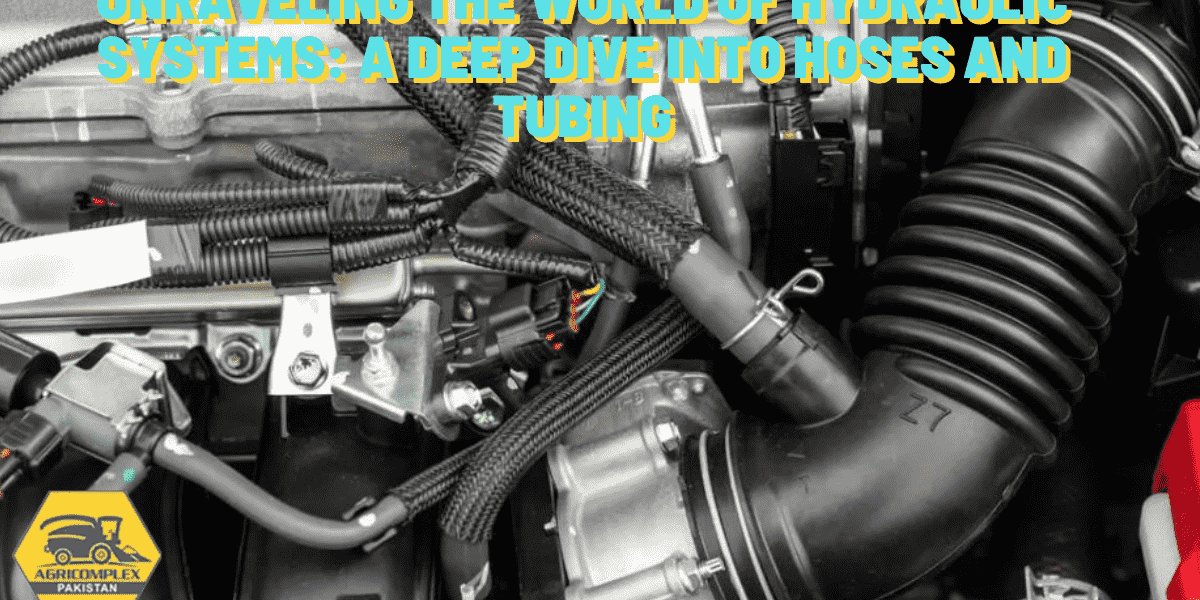Hydraulic Systems
Hydraulics is a huge and interesting field. In this area, the bendable hydraulic hose is an important part. Not only does it move the fluid, but its flexibility makes it easier to put in place and lowers the chance that it will break.
Are you ready to elevate your industrial operations to new heights of efficiency and power? Look no further than our cutting-edge Hydraulic Systems. Manufactured for businesses in heavy machinery and construction, they are designed to deliver unmatched performance, reliability, and precision.
Table of Contents
Benefits of Using
Flexible hydraulic lines change the way things work. They can fit into tight spaces, reduce the chance of leaks, and work with different amounts of pressure. Because they can bend, they don’t get cracks or wear like rigid lines do, especially when the pressure is high.
Applications and Uses
Flexible hoses are used in everything from industry machinery to car brakes. They are very important in systems where hydraulic fluid needs to move from one part to another, even if those parts need to be more perfectly lined up.
Maintenance Tips
It is very important to check for signs of wear, swelling, or leaks regularly. Keeping the hose clean and free of things from the outside will make it last longer. Always make sure that the hose doesn’t go around sharp turns, which can put stress on the inside.
Installation Procedures
Make sure there’s room for moving when you’re putting things together. Leaks can be stopped by using the right plugs and fittings and making sure they are tightened to the right torque.
Steel Braided Hydraulic Hose
The Steel Braided Hydraulic Hose is like a superhero form of a regular hose. Because it is braided with steel, it is more durable and can handle much more pressure.
Advantages Over Flexible Hydraulic Hose
This kind of hose is known for being stronger, more stable at high temperatures, and resistant to rust. It also acts as a layer of protection for the inner tube, keeping it from getting damaged.
Common Use Cases
These hoses are often used in places where there is always a lot of pressure, like in factories or on big machinery.
Selection Criteria
When choosing a steel braided line, you should think about the working pressure, the range of temperatures, and the type of fluid it will carry.
Safety Precautions
Wear safety gear whenever you work with these lines. Every so often, you should check for wear and tear or rust.
Key Features and Benefits for Construction and Industrial Professionals:
- Unmatched Power: Our hydraulic systems are engineered to provide unparalleled power, ensuring your heavy machinery can tackle the toughest tasks with ease.
- Precision Control: Experience precise and responsive control over your machinery, allowing for delicate manoeuvres in tight spaces or high-precision operations.
- Robust Durability: Built to withstand harsh conditions, our hydraulic systems are designed for longevity, reducing downtime and maintenance costs.
- Energy Efficiency: These systems optimize energy consumption, helping you save on operational costs while minimizing environmental impact.
- Safety First: Equipped with advanced safety features, our hydraulic systems prioritize operator safety, reducing workplace accidents and ensuring compliance with industry standards.
3/8 Steel Hydraulic Tubing
3/8 steel hydraulic tubing is a popular choice in many hydraulic systems due to its balance between size and flow rate capability.
Importance in Hydraulic Systems
This size of tubing has the best flow rate for many uses, which is why it is a standard choice in many businesses.
Comparison with Other Sizes
There are different sizes of tubing, but the 3/8 size is a good compromise between the amount of pressure it can handle.
Tubing Installation Steps
Make sure the cuts are clean, use the right fittings, and stay away from sharp turns. Fix the tubing properly so it doesn’t move around and cause wear.
Longevity and Durability
Because it is made of steel, this tubing has a long life, especially if it is taken care of well and kept away from rust.
| PROs | CONs |
|---|---|
| Unmatched Power for Heavy Machinery | Initial Investment Cost (Higher upfront cost) |
| Precision Control for Delicate Operations | Regular Maintenance Required |
| Robust Durability, Minimizing Downtime | |
| Energy-Efficient Operations | |
| Advanced Safety Features |
Conclusion
Anyone who works in an industry that uses hydraulic systems needs to know how complicated hydraulic hoses and tubes are. By picking the right parts and taking care of them properly, one can make sure that their systems last as long as possible and work as well as possible.
FAQs
What is the main benefit of using a hydraulic line with a steel braid?
The main benefit is that the steel braiding makes it strong and able to handle higher forces.
How often should I check my hydraulic line that bends?
A regular inspection should be done every six months, but this can change depending on how often it is used and how the surroundings are.
Can the 3/8-inch steel hydraulic tube be used in any hydraulic system?
Even though it can be used in many different ways, it’s important to make sure it meets the pressure and flow rate needs of the system.
Why do we need different kinds of lines and tubes for hydraulics?
The requirements for each application are different. Some people might want flexibility, while others might want strength or resistance to heat.
How can I tell if my hydraulic pipe or tube needs to be replaced?
If there is obvious wear, a leak, a bulge, or a big change in how it works, it might be time to replace it.
How does the steel braiding on lines keep them from rusting?
The steel banding protects the inner tube from things in the outside world that could cause it to rust.







